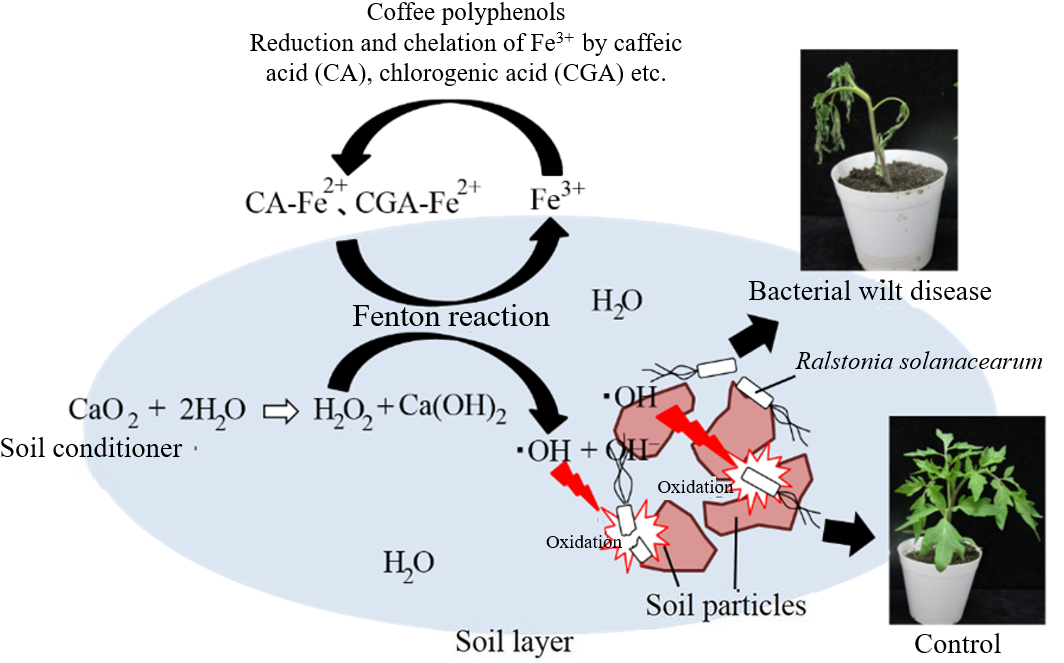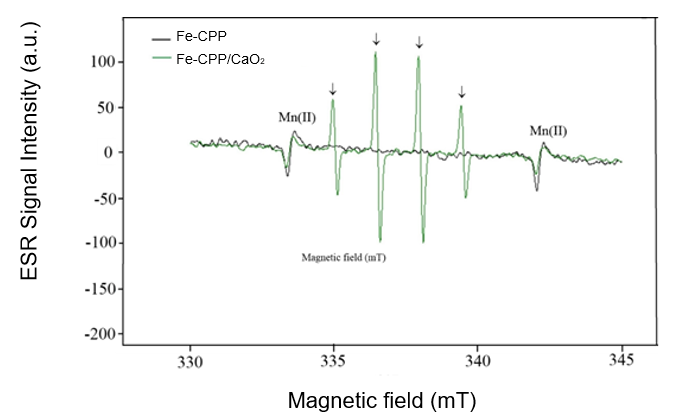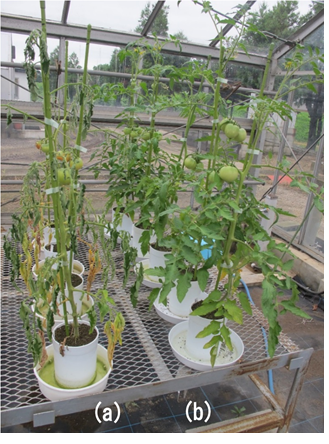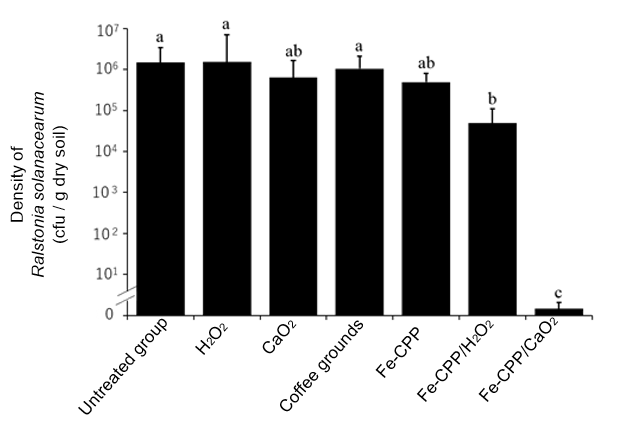A new soil sterilization agent using coffee grounds that could be used for suppressing the incidence of soil-borne diseases has been developed by NARO. It has been confirmed that the application of the polyphenol iron complex (Fe-CPP) from coffee grounds as sterilizing material, calcium peroxide as soil conditioner, and iron salt to the soil suppressed the occurrence of bacterial wilt in the laboratory. This method could provide a new safe and environmentally friendly control technology for soil-borne diseases.
Overview
In 2012, NARO has revealed that when hydrogen peroxide (H2O2) is applied to sterilizing material (Fe-CPP) made from coffee grounds using iron salt, hydroxyl radical (OH) is generated by Fenton's reaction, and its strong oxidizing power can be used for sterilization.
Using this reaction, it has been confirmed at the laboratory level that there is a strong inhibitory effect against soil contagious diseases such as bacterial wilt disease which causes severe damage to tomato cultivation in greenhouse facilities. It is clarified that CaO2 is effective as a source of H2O2 to successfully induce Fenton's reaction.
This soil sterilization method developed is expected to be a new environmentally friendly soil disease control technology since it uses CaO2 used as waste coffee grounds and soil conditioner. The results also proved that the polyphenols in coffee, such as caffeic acid and chlorogenic acid produced by reducing and chelating iron play a significant role in the generation of hydroxyl radicals in the Fe-polyphenol catalyst developed using coffee grounds.

Mechanism of suppressing the onset of tomato bacterial wilt disease by
reaction of Fe-CPP and CaO2 (soil conditioner) in soil.
Publication
Cláudio Kendi Morikawa, 2018. Generation of hydroxyl radicals by Fe-polyphenol-activated CaO2 as a potential treatment for soil-borne diseases. Scientific Reports DOI:10.1038/s41598-018-28078-6
Reference Information

Fig. 1. Verification of OH occurrence by ESR spin trapping method
The arrow (↓) indicates a characteristic spectrum which occurs only with the presence
of the OH radical.

Fig. 2. Suppression of bacterial wilt disease by application of Fe-CPP and CaO2
Control (a) and treated (b) tomato plants after 2 months of application.

Fig. 3. Soil disinfection effect by application of Fe-CPP and CaO2
Values with the same letter are not significantly different from each other.





